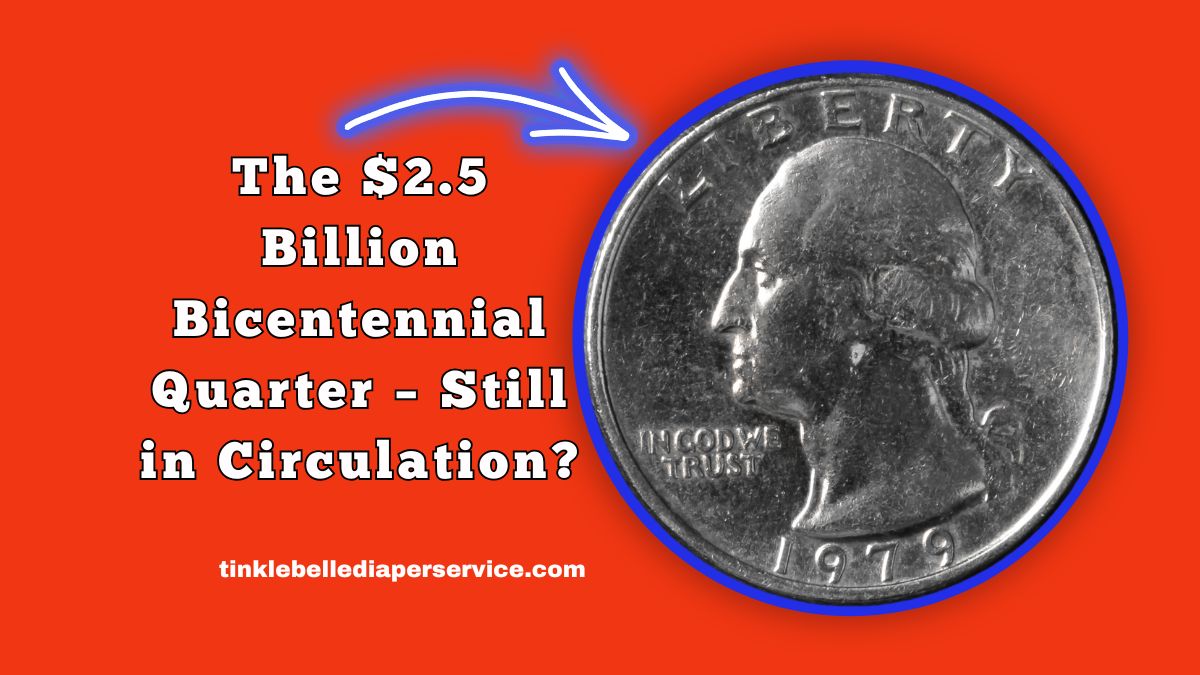The Bicentennial quarter, minted to commemorate America’s 200th anniversary in 1976, has long intrigued collectors. While most are worth just 25 cents, one extremely rare version is now believed to be worth a staggering $2.5 billion. Even more surprising? It might still be in circulation today.
Let’s explore what makes this quarter so valuable, how to identify one, and why it could be sitting in someone’s pocket change right now.
What Is the Bicentennial Quarter?
The Bicentennial quarter was produced in 1975 and 1976 to honor the United States’ 200 years of independence. Unlike the standard quarter, this coin features a colonial drummer on the reverse side instead of the usual eagle, along with the dual date “1776–1976.”
The U.S. Mint struck hundreds of millions of these quarters, making most of them quite common. However, a few rare variations were minted under special conditions—and those are the ones worth a fortune.
Why Is the Bicentennial Quarter So Valuable?
Some Bicentennial quarters stand out because of errors, low mintage, special materials, or proof finishes. One coin in particular, rumored to be worth $2.5 billion, has captivated the numismatic community.
This coin was part of an ultra-limited prototype batch and possibly contains a unique blend of metals, including gold and silver, and was struck with ultra-high relief dies.
Rarity, historical significance, and collector demand combine to drive the jaw-dropping value.
Still in Circulation?
Despite its incredible value, this rare Bicentennial quarter could still be in circulation. Because it resembles the common version, it’s easy to overlook. This makes everyday transactions a potential treasure hunt.
Many collectors believe a few examples are still unaccounted for, possibly hidden in coin jars, forgotten piggy banks, or even vending machines.
Overview of Bicentennial Quarter Types and Their Values
| Type of Quarter | Description | Estimated Value | Rarity Level |
|---|---|---|---|
| Standard Circulated | Common issue used in daily transactions | $0.25 | Very Common |
| Proof Coin | Special shine and mirror-like finish | $5 – $20 | Common (in sets) |
| Double Die Error | Blurred or doubled images | $1,000 – $50,000 | Rare |
| Special Metal Composition | Minted in silver or unusual alloys | $100,000 – $500,000 | Very Rare |
| Ultra-Rare Prototype | Unique features, gold/silver blend, low mintage | Up to $2.5 billion | Extremely Rare |
How to Identify a Valuable Bicentennial Quarter
To determine if your quarter could be valuable:
- Check the Date – Must be 1776–1976.
- Examine the Reverse – Look for the colonial drummer design.
- Inspect for Errors – Blurred text or doubled images suggest a double die error.
- Analyze the Finish – Proof coins are shinier and more detailed.
- Consult an Expert – If you suspect your coin is unique, have it graded by a professional.
Why Do People Collect Coins?
Coin collecting, or numismatics, is popular for several reasons:
- Historical Significance – Coins capture moments in history.
- Artistic Beauty – Many coins feature stunning design work.
- Investment Value – Rare coins can appreciate significantly.
- Thrill of Discovery – Finding a rare coin in circulation is exciting.
The Bicentennial quarter represents all of these qualities, making it a favorite among collectors.
The Bicentennial quarter worth $2.5 billion isn’t just a myth—it’s a real collector’s dream, still possibly hiding in plain sight.
Whether you’re a seasoned numismatist or a curious beginner, now is the time to check your change, search old drawers, and inspect those quarters.
You just might stumble upon one of the most valuable coins in American history.
FAQs
Are all Bicentennial quarters valuable?
No, most are common and worth only face value. Only rare variants with special features are highly valuable.
How do I know if my quarter is the $2.5 billion one?
Look for unusual composition, errors, or proof-like finish. It’s best to have it appraised by a coin expert.
Can I still find one of these quarters in circulation?
Yes, although rare, it’s believed a few may still be undiscovered in regular circulation.

